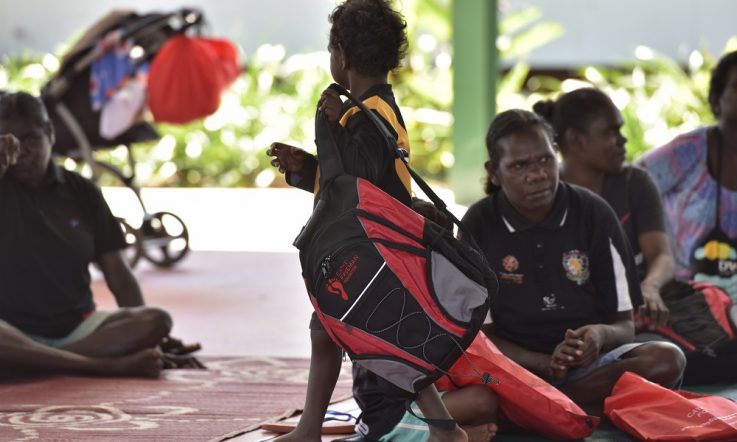At Christian Brothers' School in Lewisham, New South Wales, all Year 11 and 12 Aboriginal and Torres Strait Islander students enrol in the NRL School to Work program.
‘At the end of Year 10, the expectation is that you will enrol into the School to Work program in Year 11,' Marea Soulos, Academic Learning Support for Aboriginal and Torres Strait Islander students at the school, explains. ‘And, to be honest, there's been such positive dialogue around School to Work that the Year 10s are already asking “when do I start?”'
The NRL School to Work program is an initiative that aims to encourage secondary school completion and transition into further education and work for Indigenous Australians. The program, which is supported by a number of NRL players, sees students undertake work experience and leadership opportunities. Project officers are assigned to students to mentor them through their career development plans for up to two years.
Last year, 308 Year 12 graduates from New South Wales enrolled in the program and an overall attendance rate of 95 per cent was achieved. Nine students from Christian Brothers' School are enrolled in the program for this year.
The Year 5-12 school has an enrolment of approximately 1300 students and 42 of them are Aboriginal or Torres Strait Islanders. The school is aiming to improve overall attendance, school retention, and boost literacy and numeracy results; so, implementing an Indigenous program would help to meet these targets. Soulos, along with the school's Aboriginal mentor, networked and put out various partnership enquiries to get things started.
‘Initially, we tried a few other partnership programs, but School to Work has been our most consistent one that we've found suits our context,' she says.
Although this program engages senior students, Soulos says she's found through a public, positive dialogue and sharing student success stories, younger Indigenous students are excited to transition into their senior years of schooling and enrol in School to Work.
Over the years, she has seen students succeed in gaining apprenticeships which can lead to them being fully engaged in work upon leaving school.
‘They're hearing “through School to Work, our boys got a traineeship,” or, “through School to Work, that boy who was a school refuser is now in a TAFE course”,' she says.
‘They know it's coming up, because they've seen footy stars come in … and what the project officers bring to the little session on Wednesday or Tuesday afternoon. So, there's already that anticipation that they're going to get there one day.'
This same positive dialogue has assisted in getting all staff on board with supporting the program.
‘The boys are fully engaged in classes and it does sit very well. Because, we do withdraw them [from class] for School to Work, but what that's meant over the years is that we've had to share a lot of positive stories about the benefits of School to Work,' she explains. ‘So, I think hearing that name being always circulated in a positive way with all our staff, they're happy for the boys to be released once a fortnight for an hour.'
Consider the programs available to students at your school. How much time is devoted to creating a positive, public dialogue about them? How often do you publicise student success stories?
This program engages members outside the school community to mentor students with a career development plan. How do you form relationships with the community to assist in career development and mentoring? How do these relationships enrich careers education?



